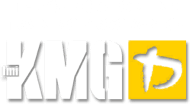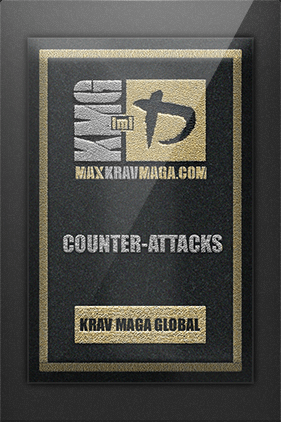From a semi-passive stance straight punches with the heel of the hand. Start with the hand strike, immediately add the body, raise your fingers …





 Counter Attacks
Counter Attacks
From a semi-passive stance straight punches with the heel of the hand. Start with the hand strike, immediately add the body, raise your fingers …
Video transcript
From a semi-passive stance straight punches with the heel of the hand. Start with the hand strike, immediately add the body, raise your fingers, your palm upwards, hit with the heel of the hand and recoil fast. The body should turn, the heel, the hips. The shoulder should be sent forward, the punch is delivering the power and the energy, the torque, the mass of the body into the target and then recoils fast backwards. A strong and a bit longer strike can be delivered with a clenched fist. Start closing the fist at the second knuckles, continue with the third knuckles, and then the middle of the first section of the thumb should go on the middle of the second section of the point finger. The fist should be closed very strongly without any space inside.
In the straight punch you should hit with the two large knuckles. The dent between the knuckles should be aligned with the center of the forearm. To deliver a straight punch, start with the hand movement, then close the fist and hit while rotating it to about 45 degrees angle. Straight left punch from the outlet stance. Start with the hand movement, add the body, the turning of the body, shifting of the weight, strike, and fast recoil. Shift the weight to the front leg, turn a bit the back leg. This is the range that achieved with the hand motion. Now, when the body shifts weight forward and then the torque brings the punch to the longest range.
A straight right punch from the outlet stance can be done with the fist or with the heel of the hand. Start with the hand motion, add the body, shifting the weight forward, and the torque. Send the shoulder forward. The back heel should be raised and turned, the side of the foot should be directed towards the target. Push with the back heel so the wave of power will be delivered through the leg, the hip, and the shoulder to the punching hand.
Punching targets from the semi-passive stance. Punch with the left, punch with the right, and punch in combinations. It can be a punch with the heel of the hand or with the clenched fist. Punching also from the passive stance. Respond to the signal of the jumping target. When it jumps, hit it. Punching from the general outlet stance. Left punch, right punch, combinations of two punches, left and right. It would be usually advised to punch first with the front hand. Punching with movements.

Notes: Punches are first practiced from a semi-passive stance;
later from a general ready stance. Practitioner should understand
principles of attacks and proper way to make a fist.
Note: Kicks should be taught first from the passive stance,
later from other stances.
Combinations Using Learned Attacks
General Note: Emphasize recoiling in all attacks (especially straight punches and regular kicks).
Reaction Games / Fighting Games
Note: One can start with the "zombie" game, hands are straight.
Circular Strikes Hooks (Roundhouses) & Uppercuts
Series of Attacks – to the front, side and rear; with different targets, heights and angles
Fighting Skills (defend -- attack -- defend)
Responding to Opponent's Response
Spinning Attacks, Strikes and Kicks
Takedowns - Cavalier Leverage on the Wrist Joint
Overcoming Disorientation Caused by an Attack (groggy)
Problem: Defender suffering pain and/or concussion resulting in inability to breath or function, the defender's tendency is to remain in standup fighting.
Solution: Fall sideways, softly to the ground, with legs toward the opponent, counterattack.
Advantage: Taking the initiative recuperates; improving position.
Disadvantage: against more than one attacker; problematic terrain
Rhythm and Pacing - as an Attacker, as a Defender - Including Fighting Drills
Attack, Defend, Attack (Part 1)
Person A -- attacks;
Person B -- defends, moves to dead side and counters.
Person A reacts with defenses and counters as needed;
| Person A Executes → | Front kick | Roundhouse kick | Side kick | Right punch |
| Person B Executes → | Outside defense to either side & counter | Defense with forearm(s) & counter | Stop kick | Inside defense & counter |
| Person A Executes → | Inside defense & counter | Hand defense & counter | Scooping defense & counter | Defend & counter |
Note: Person A should not use his first attack as a fake.
Attack, Defend, Attack (Part 2) - Opponent reaches Dead Side:
Person A -- attacks;
Person B -- defends; moves to dead side and counterattacks.
Person A reacts as follows:
Note: Kick backwards can be regular or defensive, with or without a spin. Objective is to keep the distance from Person B, who is attempting to counterattack.
Attack, Defend, Attack (Part 3)
Note: Person A - initiates an attack (at first a known one and later an unknown one). This training simulates one segment of a fight. Free practice should be permitted only after the student has practiced and obtained proficiency in all of the preceding exercises and principles.
Close Range Techniques / In-Fighting
Defender's objective -- deal with an in-fight situation: